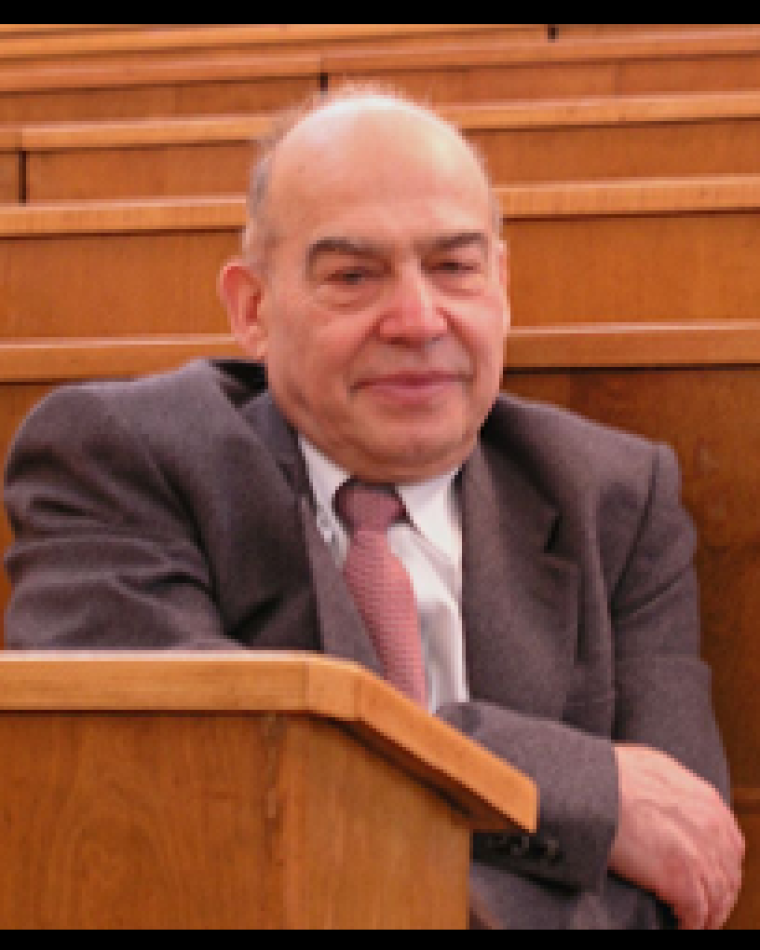
Viktor Efimovich Keilin
Viktor Efimovich Keilin
Contact Menu
Viktor Efimovich Keilin, 1933 -2014
December 5, 2014 (PO38). Professor Viktor Keilin passed away on 24 November, 2014 at the age of 81. For more than 50 years, he was in charge of technical applications of superconductivity at the leading Russian research organization, the I.V. Kurchatov Institute for Atomic Energy.
Viktor Efimovich Keilin was born 26 February 1933 in Kharkov (then USSR). In 1957 he graduated from the Moscow Bauman State Technical University with specialization in cryogenics. After graduation, he joined the P.L. Kapitsa Institute for Physical Problems. His PhD thesis was dedicated to cryogenics for superconductivity.
Prof. Keilin joined the Kurchatov Institute in 1961. As he mentioned many times: “I was the very first person in USSR hired just to work in applied superconductivity” His supervisors were a vice-president of the USSR Academy of Science, M.D. Millionschikov, and academician E.K. Zavoisky known for the discovery of the electron paramagnetic resonance. From the very beginning, Viktor was involved in a new area at that time: applied superconductivity. His scientific ingenuity, technical creativity, dedication, and wisdom resulted in outstanding achievements. The Kurchatov team developed under his leadership classic cryogenic configurations for large superconducting magnets, including current leads that can carry high currents, and established principles for designing partially-stabilized superconducting magnets. Independent of the Oak Ridge team, he introduced the cable-in-conduit approach. Ideas of Prof. Keilin were successfully demonstrated in the world-first tokamak T-7 with superconducting coil system for generation of the toroidal field (1979), and in tokamak T-15 with Nb3Sn windings (1988). With upgrades and modifications, principles developed by him and his associates are used in designing superconducting magnets for ITER.
Viktor was always dreaming about efficient, easy-maintenance, relatively inexpensive superconducting magnets for diverse applications. The Kurchatov team built hundreds of magnets for gyrotrons, wigglers, high-field applications, etc. He lead developments that were used in such unique facilities as SST-1 (India), HT-7 (China), KSTAR (Korea), ATLAS (CERN). He inspired Russian efforts in HTS including development of superconducting transmission and distribution cables, fault current limiters, HTS leads for collider NICA (Dubna, Russia) and other projects. He was awarded two very prestigious USSR State Prizes, in 1976 and 1988.
Viktor Efimovich Keilin was also famous for attracting cohorts of young scientists to applied superconductivity. His positive attitude towards life, inexhaustible enthusiasm and energy, endless optimism and sense of humor attracted a lot of young people into the field. He had a map where he marked countries where his former students have been working. These included Russia, Ukraine, USA, Germany, Japan, England, Netherlands and many others. He was a professor at the Moscow Institute of Engineering Physics and supervised dozens of PhD students. For more than 30 years, he lead the annual school of superconductivity in Protvino near Moscow. It is not easy to find a Russian scientist or engineer in the field of superconductivity who did not attend this school at least once. Most of his students have been staying in the field during their whole career.
All of us who knew this outstanding man feel a great personal loss. At the same time, memory of Prof. Keilin will continue encouraging us towards new achievements in applications of superconductivity.
Colleagues at I.V. Kurchatov Institute and M. Parizh, GE, Schenectady, NY, USA